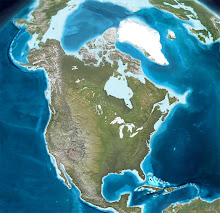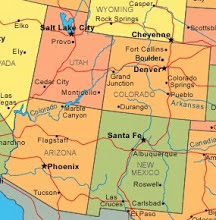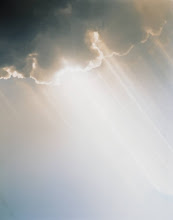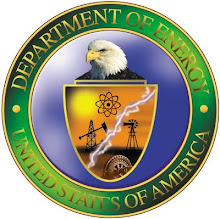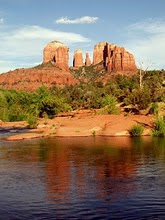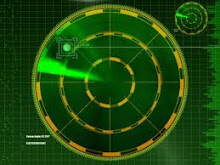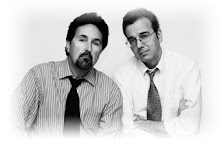By Steve Hammons
In three areas on the edge of the Colorado Plateau, which spans the four states of the Four Corners region, UFOs and other unusual incidents have been reported over the years and decades.
Sedona, Arizona, is one well-known spot, world-famous for the awe-inspiring red rock landscape and towering red cliffs and formations. Located on the southwestern rim of the Colorado Plateau, Sedona is also known for reports of invisible energy fountains and vortexes.
Durango, Colorado, and nearby Aztec and Farmington, New Mexico, are located on the eastern border of the Colorado Plateau. According to some reports, a UFO crashed or made a controlled crash landing near Aztec in 1948.
In 1950, the people of Farmington reported a large number of UFOs over a period of three days. This was well-documented by eyewitnesses and newspaper reports and is known as the “Farmington armada” case.
And in the region of the town of Vernal in the Uinta Basin of northern Utah, at the northern or northwestern edge of the Colorado Plateau, a significant number of UFO incidents and multiple other anomalous phenomena have been documented in books and films.
EARTH ENERGIES
Many people have heard about the Four Corners region of the American Southwest – the area around the intersection of Arizona, Utah, Colorado and New Mexico.
Yet, fewer of us may be familiar with the Colorado Plateau, an anomalous uplift of land in a rough circle that underlies the Four Corners area and likewise spans the four states.
Volcanic activity underlying the plateau is believed to be responsible for the uplift. Other natural forces have come into play to reveal millions of years of rock layers in places like the Grand Canyon and the beautiful national parks of Utah.
In Sedona, 68 miles south of Flagstaff, some researchers have speculated about the magnetic anomalies that have been documented by the U.S. Geological Survey. The rock and soil are red due to high iron oxide content. Also, significant quantities of underground quartz in Sedona as well as unique volcanic-related formations have been looked at in connection with alleged geomagnetic energy fountains and vortexes.
The geology of other areas on the perimeter of the Colorado Plateau may have similar features. Some of the rock types, such as ancient volcanic igneous rock, and mineral composition, such as high iron and quartz content, reportedly could be common denominators in Sedona, Durango, Utah’s Uinta region and other areas on the perimeter of the plateau.
Could geological and geographic traits of the Colorado Plateau, particularly the perimeter of the plateau, be related in some way with UFOs and a number of other unusual phenomena?
What other information about the plateau might inform us further? According to the webpages of the “Celebrating the Colorado Plateau” exhibits at the Museum of Northern Arizona in Flagstaff, “The Colorado Plateau encompasses 130,000 square miles. Elevations range from about 1,200 feet to 12,365 feet. It is home to one million people, including ten Native American tribes and numerous rare species of plants and animals.”
The museum’s website asks and answers the question, “How old is the Colorado Plateau?” “There is no simple answer because while the rocks exposed here may be hundreds of millions or even thousands of millions of years old, the Plateau as a distinct landscape feature is much younger. The age of the Colorado Plateau as a discrete geographic province is estimated to be bracketed between 70 and 17 million years.”
At Northern Arizona University (NAU) in Flagstaff, the Colorado Plateau Research Station is a "diverse scientific unit" consisting of "state and federal employees focused on the ecology of the Colorado Plateau," according to the NAU website.
Also at NAU, the Colorado Plateau Cooperative Ecosystem Studies Unit and the Colorado Plateau Biodiversity Center strive to research, understand and document the diverse animal and plant life, geography, geology, climate, hydrology and complex natural dynamics of the plateau.
NATURE’S STORY
East of Sedona, the rugged terrain of the plateau's southern edge, known as the Mogollon Rim, includes huge escarpments that clearly define the perimeter of the Colorado Plateau.
That is the region where, in 1975, a forest-thinning crew working in Arizona’s Apache-Sitgreaves National Forests reportedly encountered a UFO. The crew’s foreman, Travis Walton, was allegedly taken aboard the UFO craft for several days. This story was the basis of the Hollywood movie “Fire in the Sky.”
Just south of the “transition zone” between the plateau’s southern boundary around Sedona and Arizona’s Sonoran Desert is metro Phoenix, site of the famous “Phoenix lights” incident of 1997. In that case, hundreds or thousands of residents spotted an unusual large craft over the city one evening.
Not far from the plateau’s perimeter on the southeast is Socorro, New Mexico, the location of a well-known 1964 UFO incident. A Socorro public safety peace officer reported direct observation of a landed craft and of its takeoff. This case was investigated by the U.S. Air Force’s Project Blue Book, based at Wright-Patterson Air Force Base in Dayton, southwest Ohio.
North of Socorro and also on the eastern border of the plateau south of Farmington, Aztec and Durango are the well-known Chaco Canyon ruins. These are the remains of elaborate complexes of stone buildings erected by the ancient people who eventually abandoned the site. About 57 miles west-northwest of Durango are more structures and cliff dwellings at Mesa Verde National Park and the Canyons of the Ancients National Monument.
In addition, the Continental Divide runs north-south through the Durango region. The Continental Divide extends from Alaska to South America. On the west side of the divide, water flows into the Pacific Ocean. On the east side, water flows to the Atlantic.
Southern Colorado's San Luis Valley abuts the east side of the Colorado Plateau east of the Durango area. The San Luis Valley and northern New Mexico across the state line have also been linked to UFO and other unusual occurances.
And at the northern perimeter of the plateau in the Uinta Basin of northern Utah, decades of highly-unusual phenomena and UFO incidents were examined in a multi-year research project and in an excellent 2005 non-fiction book by award-winning journalist George Knapp and biochemist Colm Kelleher, PhD.
In addition to geological and geographic factors, the plateau has a human history and contemporary human make-up that might also be worth exploring. The Museum of Northern Arizona website tells us, “The Colorado Plateau has been continuously inhabited by native people of the Americas for approximately 12,000 years.”
“The early people of the Plateau gathered wild plants and hunted game animals. Many took up farming maize, beans, and squash [the "three sisters"] several thousand years ago. Today, the native peoples of the Colorado Plateau include the Hopi, Navajo, Zuni, Hualapai, Havasupai, Ute, Apache, and Southern Paiute. Each tribe has a distinct history, culture, and language.”
In several of the cases of UFOs and anomalous phenomena on and around the Colorado Plateau, we do frequently seem to see Native American/American Indian connections and proximity with unusual incidents and phenomena.
Could the unique combinations of Earth, Nature and people of the plateau help us understand more about UFOs and other unconventional phenomena?
What stories does the Colorado Plateau have to tell us?
(Related articles “Storytelling affects human biology, beliefs, behavior” and “Reagan’s 1987 UN speech on ‘alien threat’ resonates now” are posted on the CultureReady blog, Defense Language and National Security Education Office, Office of the Undersecretary of Defense for Personnel and Readiness, U.S. Department of Defense.)
skip to main |
skip to sidebar

In the past 30 days, readers from approximately 40 countries or territories using about 20 languages visited the Joint Recon Study Group site.

To see more articles, scroll down the right-side column.

Steve Hammons

Articles from the Joint Recon Study Group site and Transcendent TV & Media site are included.
The Joint Reconnaissance Study Group is the San Diego-based, combined-service/agency, research-and-activities team in my novels "Mission Into Light" and sequel "Light's Hand." This site contains information of interest to the JRSG.
Home page: Joint Recon Study Group site
Readers from around the world visit this site.

In the past 30 days, readers from approximately 40 countries or territories using about 20 languages visited the Joint Recon Study Group site.
April 2021 threat alert: ‘Force protection’ for our troops now the responsibility of all Americans
First responders must deal with society’s problems, shortcomings, injustices every day
Could some UFOs be linked to Native American 'white stone canoe' legends, stories?
Wildland firefighter basic training available at community colleges, tech schools, training centers
‘Boomer remover’ coronavirus is bigger threat to WWII generation that saved the world
‘Black swan’ events that aren’t: Coronavirus, climate emergency, unidentified aerial phenonema
Reagan’s complete 1987 UN message on ‘alien threat’ overlooked: Grave danger here, now
Was Reagan briefed about UFOs and original ‘Day the Earth Stood Still’ movie?
My military draft lottery number was #165 during final Vietnam War years
“Keep On The Sunny Side,” by The Whites, from movie O Brother, Where Art Thou?”
Living along Ohio River for centuries, Native Shawnee called it ‘Kiskepila Sepe’ – ‘Eagle River’
Native American words around us: States, towns, rivers, lakes, terrain, plants, animals, military
Athens County, Ohio, was key spot when colonists, Redcoats fought Shawnee in 1774 battle
1787 Northwest Ordinance set course for Ohio, Indiana, Illinois, Michigan, Wisconsin, Minnesota
Smallpox-tainted blankets were 1763 bioweapon on northern Appalachian Mountains frontier
Diana Krall performs “Maybe You’ll Be There" live in Paris with Paris Symphony Orchestra 2001.
Books to read in 2021? Novels "Mission Into Light" and the sequel "Light's Hand"
Novel excerpt: Renew, prepare America with ‘Urgent Response Group’ for teens, young adults
Diana Krall performs “I Get Along” live in Paris with Paris Symphony Orchestra 2001.
Steve Tyrell sings “Give Me the Simple Life.”
Diana Krall performs “Love Letters” live in Paris with Paris Symphony Orchestra 2001.
Visit the article archives!

To see more articles, scroll down the right-side column.
Novel "Mission Into Light" overview on Amazon
Novel "Light's Hand" overview on Amazon
Adventures of the Joint Recon Study Group: Overview and synopses of activities and operations
Key chapter overviews: Points of interest in the novel "Mission Into Light"
Key chapter overviews: Points of interest in the novel "Light's Hand"
Multimedia rights available
English and foreign-language book rights, audio book and e-book rights for "Mission Into Light" and "Light's Hand" are available. Movie and TV rights are available.
I'm seeking agent representation for these works and rights.
Please contact Steve Hammons for more information at hammons55@gmail.com.
Feature film screenplay
I completed a feature film screenplay in 2006 based on “Mission Into Light” and “Light’s Hand” combining key elements of both novels.
The screenplay takes audiences into the adventures and discoveries of the Joint Recon Study Group and the relationships among team members, friends and associates as they explore leading-edge research and emerging transcendent developments.
I'm seeking agent representation for this screenplay.
.........................
I also wrote a TV series pilot script based on "Mission Into Light" and "Light's Hand" story. I'm seeking agent representation this script.
About the Author

Steve Hammons
About the Author
I was born and raised in southwestern Ohio near the Kentucky and Indiana borders, then went to college at Ohio University in the southeastern Appalachian region of the state near West Virginia.
I graduated with a dual major in communication (journalism focus) and health education (psychology focus) with a minor in pre-law.
Ohio U. is home to the respected Scripps College of Communication and E.W. Scripps School of Journalism.
I also completed two graduate-level courses in guidance counseling theory and method at Ohio U.'s College of Education, School of Applied Behavioral Sciences and Educational Leadership.
At the end of my undergraduate education at Ohio University, I moved to the beautiful American Southwest where I applied my education, continual training and and ongoing experience to related professional fields such as health care, journalism and special research areas.
My novels "Mission Into Light" and the sequel "Light’s Hand" are available in e-book and 6"x9" paperback from most online booksellers worldwide.
Readers review metaphysical-military-intelligence adventure novel ‘Mission Into Light’
My articles on DoD CultureReady blog, Defense Language and National Security Education Office
Transcendent TV & Media site
Past articles: Scroll down the right-side column for more articles.

Articles from the Joint Recon Study Group site and Transcendent TV & Media site are included.




























